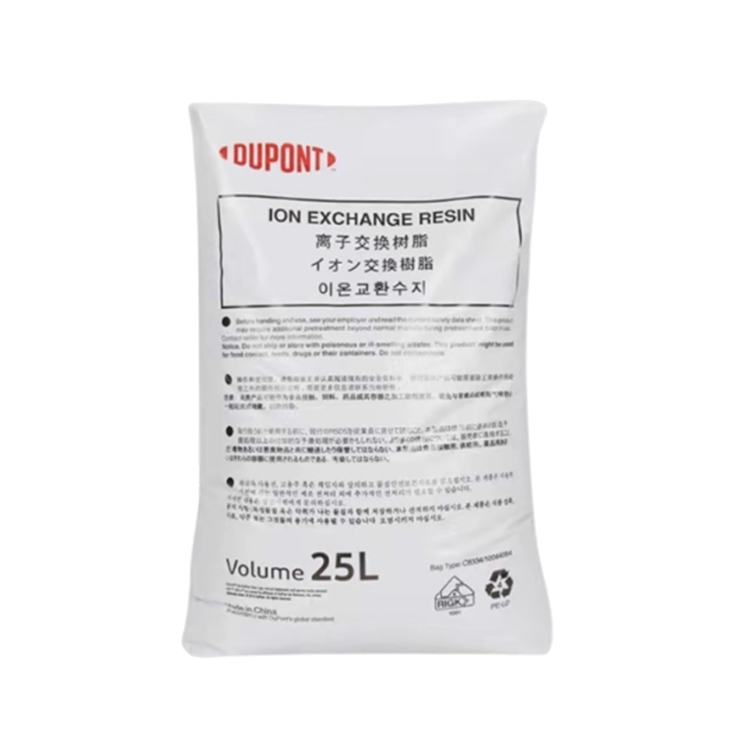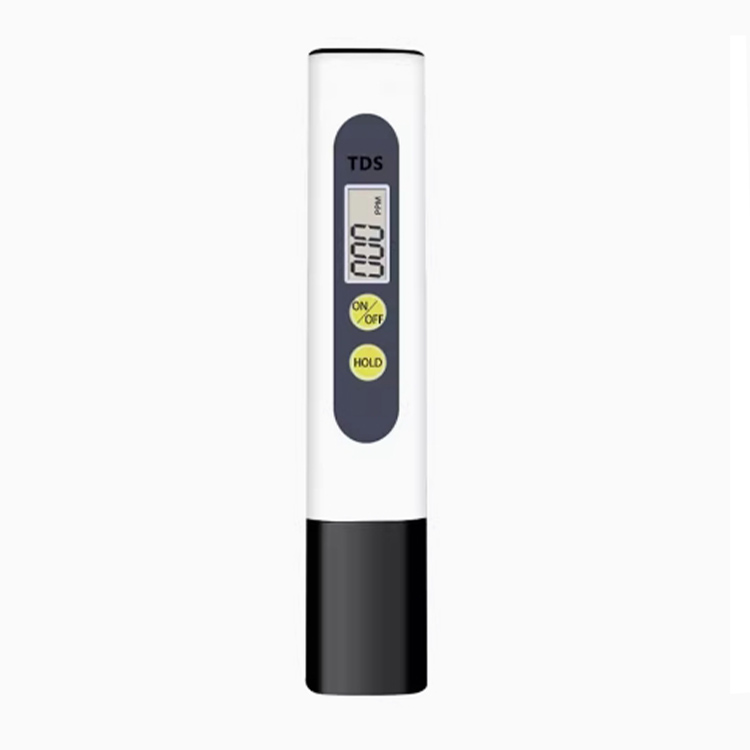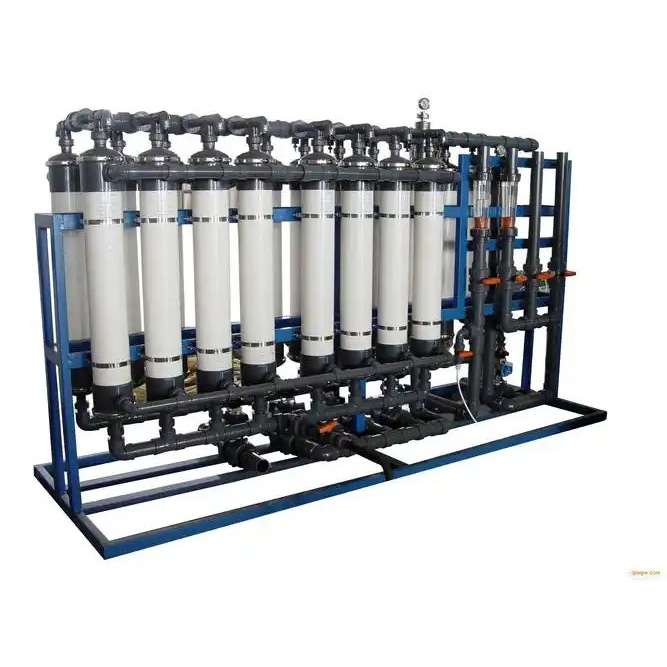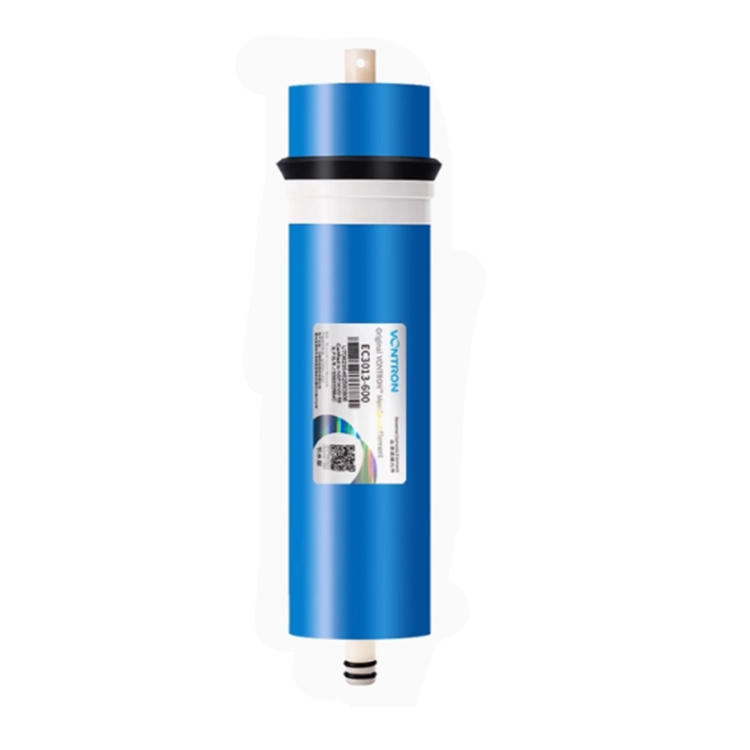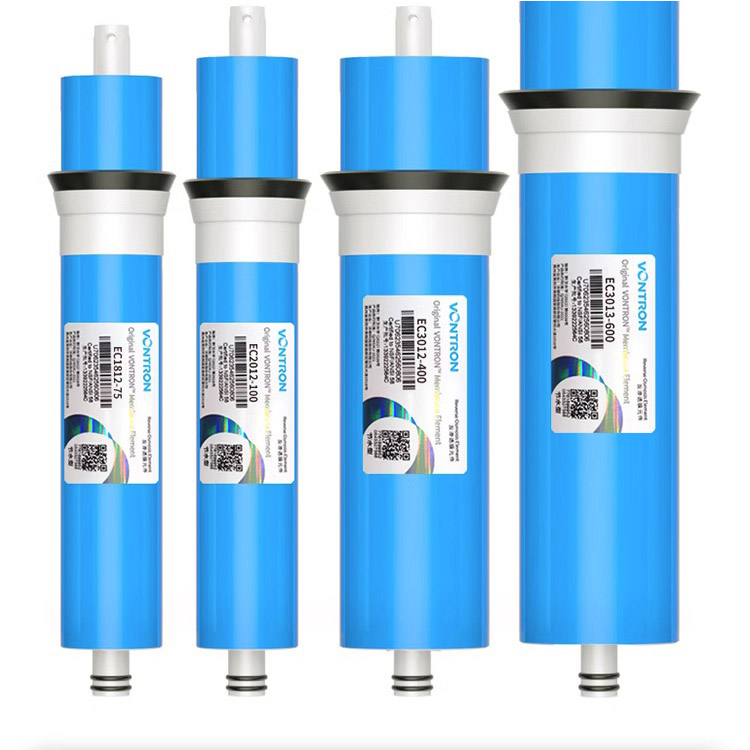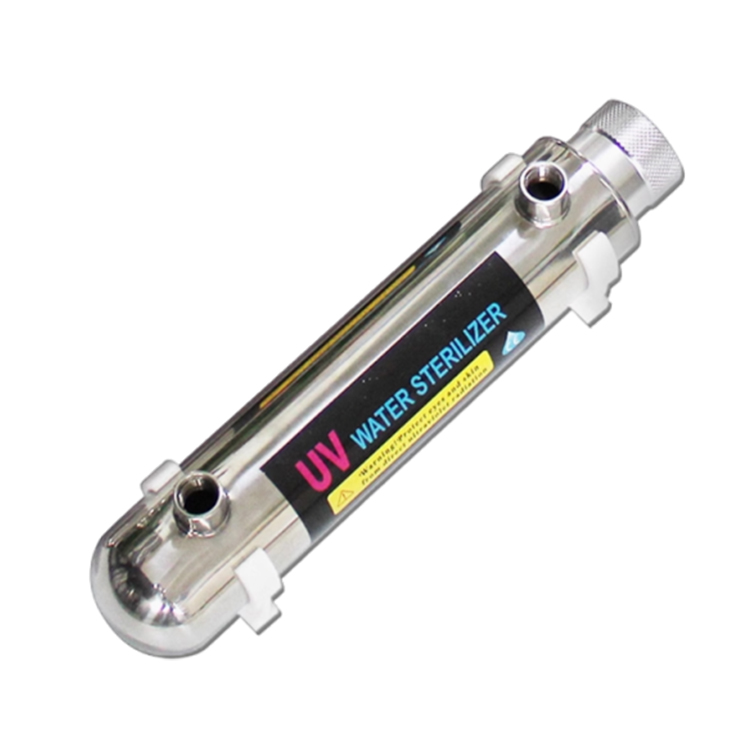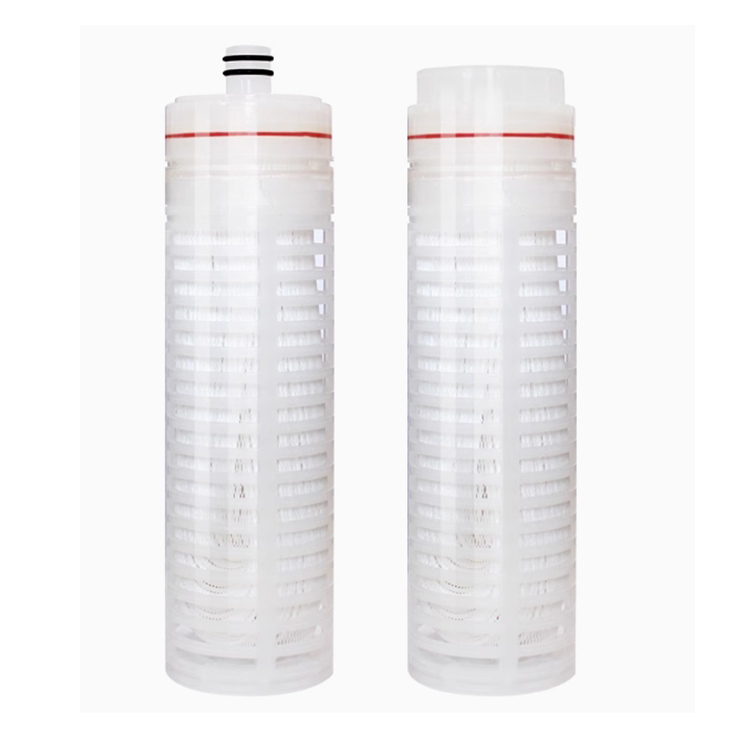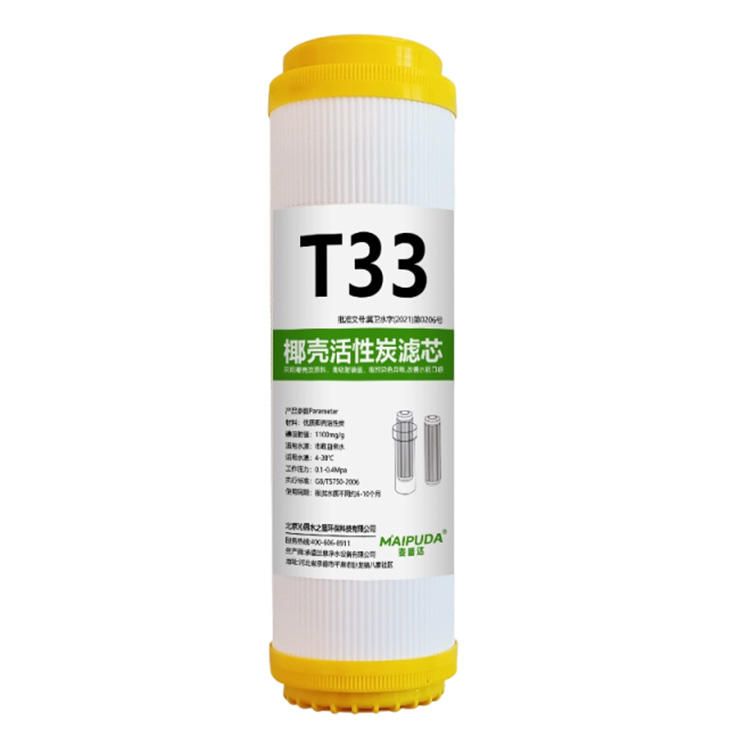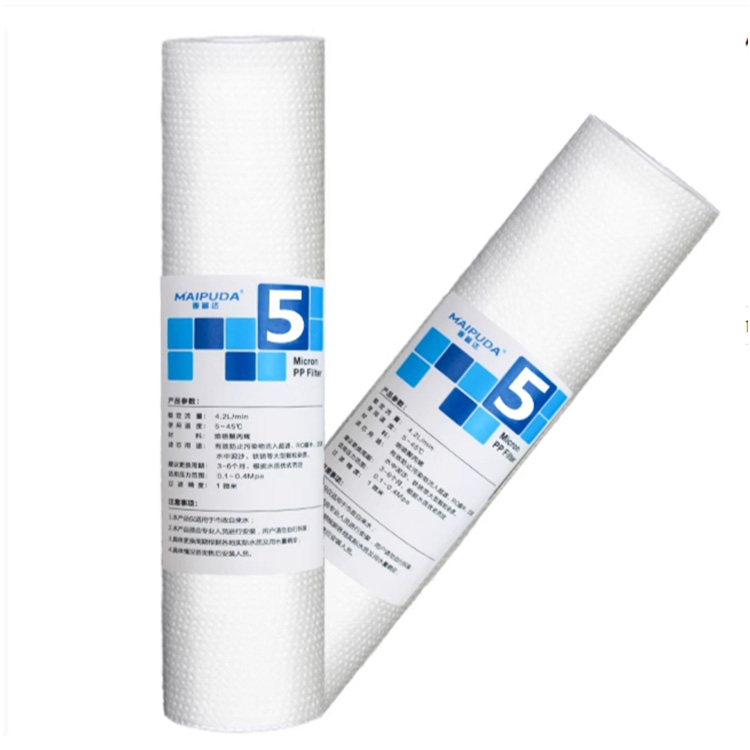Products
Reverse Osmosis Membrane Filter Element
The reverse osmosis membrane filter element utilizes the selective permeability of the reverse osmosis membrane to allow only water molecules and some mineral ions to pass through, while effectively intercepting impurities such as bacteria, viruses, heavy metal ions, organic matter, colloids, etc.
Send Inquiry
Product Description
The appearance specifications of the reverse osmosis membrane filter element vary depending on the brand and model. The length, diameter, and interface size of the filter element will meet certain standards to facilitate common use and replacement. Within the range of 1812~3013, regardless of any brand specifications, the Maipuda® reverse osmosis membrane filter element is consistent and can be used universally.
The desalination rate of the reverse osmosis membrane filter element reflects the filter element's ability to remove salt from the water. The desalination rate of the Maipuda® reverse osmosis membrane filter element is between 95% and 97%, which means that the filter element can remove most of the salt and impurities in the water.

The reverse osmosis membrane filter element using dry membrane treatment technology does not need to add protective liquid during storage and transportation, thus avoiding the odor and pollution problems that may be caused by the protective liquid. In addition, the dry membrane is easier to clean and replace, making it more convenient for you to use.

RO membrane labels usually contain basic information such as the filter element model, specifications, production date, expiration date, and related certification marks and quality assurance information. This information is crucial for those who want to understand the performance and quality of the filter element. If you are unclear or have questions, you can consult Maipuda® customer service for a more detailed and accurate explanation.

Reverse Osmosis Membrane Filter Replacement Steps
1. Unscrew the bottle cap with a wrench
2. Open the RO membrane you see
3. Remove it with a mold puller or a screwdriver
4. Open the new RO mold packaging bag
5. One end of the double sealing ring is inward
6. Put it in and screw the cap to complete
2. Open the RO membrane you see
3. Remove it with a mold puller or a screwdriver
4. Open the new RO mold packaging bag
5. One end of the double sealing ring is inward
6. Put it in and screw the cap to complete

Frequently asked questions about Maipuda® reverse osmosis membrane filter
1. Why is the water output so small after changing to a new membrane, but so large after changing back to the old membrane?
Because the old membrane is perforated, there is no filtering effect or the filtering effect is discounted. When the pressure barrel is closed, if the water output reaches the effect of (Figure 1), the membrane is perforated, and the effect of (Figure 2) is normal flow diagram-Figure
Because the old membrane is perforated, there is no filtering effect or the filtering effect is discounted. When the pressure barrel is closed, if the water output reaches the effect of (Figure 1), the membrane is perforated, and the effect of (Figure 2) is normal flow diagram-Figure

2. Why does the TDS value of the RO membrane not decrease after one week of use?
The membrane shell is not compatible enough. Wrap the raw tape around the double seal ring of the RO membrane and then insert it into the membrane shell. If the test value starts to decrease, replace the membrane shell. If the problem still exists after replacing the membrane shell, it means that the double seal ring of the RO membrane is damaged and the double seal ring of the membrane needs to be replaced.
3. Why is the TDS value of the RO membrane not stable after use?
When the water temperature drops rapidly (such as a sudden drop in temperature), the sealing ring of the RO membrane is affected by thermal expansion and contraction and the sealing performance becomes poor. Soaking the double sealing ring part of the membrane in boiling water for about 3 minutes can solve the problem.
4. After replacing the RO membrane, there is still no purified water, but when the wastewater is turned off, there is purified water?
The pressure before the membrane is insufficient, the water inlet solenoid valve or the pre-filter is blocked, or the water pump has a pressure drop.
5. What is the reason for the continuous wastewater after replacing the new membrane?
After replacing the new membrane, the pressure accumulation amplitude inside the membrane shell changes, and the check valve is prone to slipping. Replacing the check valve can solve the problem.
6. Why can't water be produced after half a year of use after each replacement of the membrane? What is the reason?
The service life of the membrane is related to the local water quality, water pressure, purified water volume and daily maintenance and use. It is recommended to replace it regularly and use a qualified pre-filter element, and use an 18-second recoil solenoid valve and a larger wastewater ratio.
7. Why can the old membrane be used for 2 years, but the new membrane can only be used for a few months?
Check whether the sewage outlet is blocked. Under normal circumstances, the wastewater will be abnormally large 18 seconds before starting the machine, and the wastewater will become smaller after 18 seconds. If there is no change in the wastewater after starting the machine, the wastewater solenoid valve or wastewater ratio is blocked and needs to be replaced.
The membrane shell is not compatible enough. Wrap the raw tape around the double seal ring of the RO membrane and then insert it into the membrane shell. If the test value starts to decrease, replace the membrane shell. If the problem still exists after replacing the membrane shell, it means that the double seal ring of the RO membrane is damaged and the double seal ring of the membrane needs to be replaced.
3. Why is the TDS value of the RO membrane not stable after use?
When the water temperature drops rapidly (such as a sudden drop in temperature), the sealing ring of the RO membrane is affected by thermal expansion and contraction and the sealing performance becomes poor. Soaking the double sealing ring part of the membrane in boiling water for about 3 minutes can solve the problem.
4. After replacing the RO membrane, there is still no purified water, but when the wastewater is turned off, there is purified water?
The pressure before the membrane is insufficient, the water inlet solenoid valve or the pre-filter is blocked, or the water pump has a pressure drop.
5. What is the reason for the continuous wastewater after replacing the new membrane?
After replacing the new membrane, the pressure accumulation amplitude inside the membrane shell changes, and the check valve is prone to slipping. Replacing the check valve can solve the problem.
6. Why can't water be produced after half a year of use after each replacement of the membrane? What is the reason?
The service life of the membrane is related to the local water quality, water pressure, purified water volume and daily maintenance and use. It is recommended to replace it regularly and use a qualified pre-filter element, and use an 18-second recoil solenoid valve and a larger wastewater ratio.
7. Why can the old membrane be used for 2 years, but the new membrane can only be used for a few months?
Check whether the sewage outlet is blocked. Under normal circumstances, the wastewater will be abnormally large 18 seconds before starting the machine, and the wastewater will become smaller after 18 seconds. If there is no change in the wastewater after starting the machine, the wastewater solenoid valve or wastewater ratio is blocked and needs to be replaced.
Hot Tags:
Related Category
Send Inquiry
Please feel free to give your inquiry in the form below. We will reply you in 24 hours.


